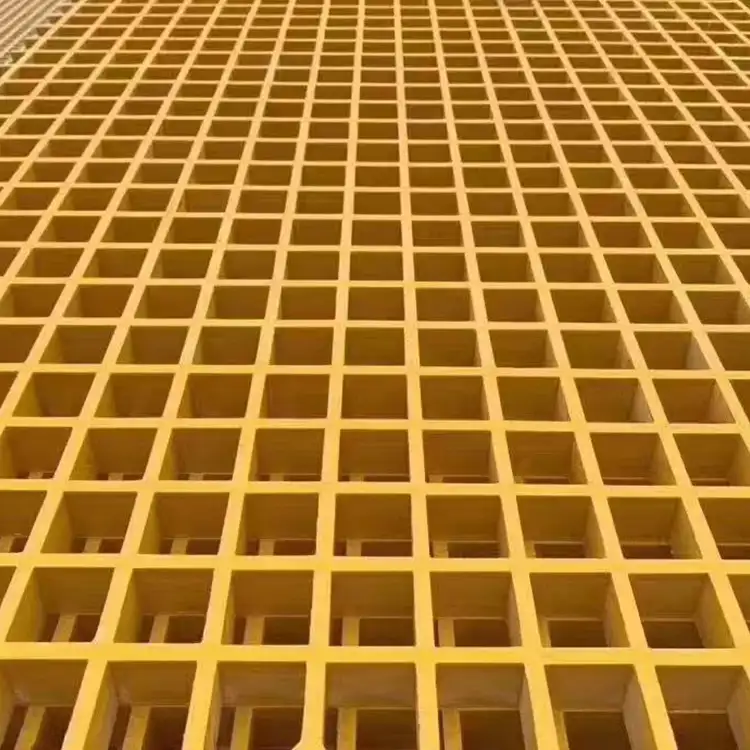FRP Grating vs. Steel Grating: Which is the Best Choice for Your Project?
2024-10-18
When it comes to industrial flooring and platforms, both FRP grating and steel grating are common choices. However, choosing the right material depends on the specific requirements of your project. In this blog, we’ll compare FRP grating with steel grating, exploring their advantages and limitations to help you make the best choice.

1. Durability and Corrosion Resistance
One of the main reasons to choose FRP grating over steel grating is its superior corrosion resistance. Steel, while strong, is highly susceptible to rust and corrosion, especially in environments with high moisture, salt, or chemical exposure. This means that in industries such as marine, wastewater treatment, or chemical processing, steel gratings often require frequent maintenance and protective coatings to prevent rusting.
FRP grating, on the other hand, is inherently resistant to corrosion. It can withstand harsh chemicals, water, and salt without rusting or degrading, making it an ideal choice for these environments. This advantage leads to lower maintenance costs and a longer lifespan.
2. Weight and Ease of Installation
Another significant difference between FRP and steel grating is their weight. Steel grating is heavy and requires specialized equipment for installation, which can increase labor costs and time spent on the job.
FRP grating is much lighter—often up to 70% lighter than steel. This lightweight nature makes it easier to transport, handle, and install without the need for heavy machinery. The reduced weight also makes FRP grating an excellent choice for retrofits or when weight limitations are a concern, such as on catwalks or elevated platforms.
3. Strength and Load Bearing Capacity
Steel grating is known for its incredible strength and ability to support heavy loads, which is one of its main advantages. It is the material of choice in applications where extreme weight-bearing capacity is needed, such as in heavy industrial operations or where heavy machinery is used.
While FRP grating is also strong, it does not match the load-bearing capacity of steel. However, pultruded FRP gratings offer enhanced strength and can support significant loads, making them suitable for many industrial applications. The decision between the two often depends on the specific load requirements of the project.
4. Safety Features
Safety is a critical factor when choosing between FRP and steel grating. FRP grating has several inherent safety features:
- Non-Conductive: FRP is non-conductive, making it ideal for environments with electrical hazards. Steel, in contrast, can pose a risk of electrical shock when used around high-voltage equipment.
- Slip Resistance: Many FRP gratings come with slip-resistant surfaces, which make them ideal for wet, oily, or otherwise hazardous environments. Steel gratings often require additional coatings or modifications to achieve similar slip-resistant properties.
- Fire Retardancy: Some FRP grating products are fire-retardant, making them safer in areas where fire risks are a concern. Steel grating, while not flammable, can become extremely hot in a fire and may lose structural integrity.
5. Cost and Maintenance
While the initial cost of FRP grating may be higher than steel, the long-term costs are often much lower. Steel grating requires regular maintenance to prevent rusting and corrosion, which can include repainting, coating, or replacing damaged sections.
FRP grating is virtually maintenance-free. Its resistance to corrosion, UV rays, and chemicals means it retains its structural integrity for many years without the need for frequent repairs or replacements. Over time, this results in significant cost savings, especially in harsh or corrosive environments.
6. Environmental Considerations
FRP grating is also considered a more environmentally friendly option compared to steel. The production of FRP grating typically has a lower carbon footprint than steel production, which involves energy-intensive processes. Additionally, FRP’s long lifespan and minimal maintenance needs contribute to less waste over time.
Conclusion
Both FRP and steel grating have their advantages, and the choice between them largely depends on the specific requirements of your project. If you need maximum strength for heavy loads, steel grating may be the better option. However, if corrosion resistance, lightweight materials, safety, and long-term cost savings are more important, FRP grating is the superior choice. By carefully considering the needs of your environment, you can select the right material that balances cost, safety, and durability for your application.


